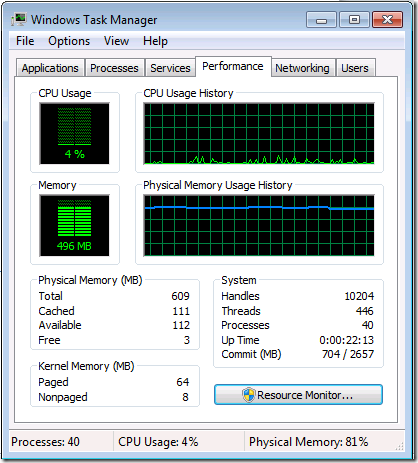Guest Paging vs. Virtualization Paging and Negative Memory Availability
Jeff has discussed this at some length over on the virtualization team blog, but as a general rule of thumb we believe that it is much better to have paging occur inside the guest operating system rather than at the virtualization layer (if paging is needed).
The simple reason for this is that the guest operating system has far better understanding of which are the best sections of memory to page out – where as all the virtualization layer can do is to guess at what should be paged out.
In my recent demonstrations of dynamic memory I came upon another interesting angle to consider. Here is a screenshot of task manager from a virtual machine that is running at –23% memory availability (i.e. it does not have enough memory available and is paging in the guest):

What is fascinating about this screenshot is that even though this virtual machine is significantly short of memory, the guest operating system is still keeping 112mb memory available / as file cache. The reason for this is that the copy of Windows inside the virtual machine knows that even though it is short of memory – it can provide the best experience for the user of the virtual machine by not using all the memory that it has and by keeping a little bit free to serve as a cache / be there for new applications.
It is exactly this sort of logic that gets lost when paging is done at the virtualization layer instead of inside the guest operating system.
Cheers,
Ben